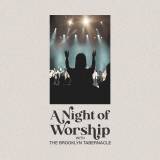How to Breathe With Your Diaphragm When Singing

Do you know how to breathe? Of course you do, else you wouldn’t be alive. You breathe 24/7 which would normally make you an expert in the field. So, how strange is it that you, as singers need to learn, or re-learn, how to breathe with your diaphragm to sing properly?
As singers we need all the air we can breathe as air is what will move our vocal cords and produce sound. Did you know that when we breathe normally and unconsciously, we only inhale one eight of our lug capacity? 1/8! This means that our lugs can accommodate 700% more air, something that can make the difference between hitting that high note with ease or stressing up about it. Read on to learn how to use that extra 7/8ths.
What is the diaphragm
I’ve heard many people say: breathe with your belly, or, breathe with your stomach. Although the idea is correct, these phrases should only be used to teach children who can’t comprehend anatomy. The correct thing to say is: breathe using your diaphragm better.But what exactly is the diaphragm? I’m sure you’ve heard it many times before, and have probably had a professor or two make you put your hands on their bellies while they breathed to demonstrate how to use your diaphragm.
The diaphragm is a flat muscle that sits underneath our lungs and aids with respiration. It attaches to the base of the thorax (ribs) and basically separates the lugs from the stomach and intestines. Take a look at the following image for an illustration.

How the diaphragm works
When we breathe in, the diaphragm moves downward and compresses the stomach and intestines to make space for the air that comes in (this is why it’s hard to breathe on a full stomach, there’s no space for the air). At the same time, it moves laterally (outward) and causes the rib cage to expand to accommodate the lungs as they expand.When we breath out, the diaphragm moves upward and compresses the bottom part of the lugs, causing the air to escape. At the same time, it lets the ribs to get back into place, which causes them to compress the lugs and squeeze out the rest of the air.
During normal respiration you don’t have to think about any of that. Thank God! Image what it would be like having to breathe consciously all the time. For now, let’s stick to breathing consciously during singing.
CLICK HERE TO KNOW YOUR VOCAL RANGE
Why we need to know how to use the diaphragm consciously
I once talked to a choir singer, a very nice tenor with a gentle voice, who told me that he was trying to expand his breath by squeezing his abs inwards as tight as he could. He could not understand why his air supply was not getting any bigger.What he didn’t realize was that by squeezing his abs, he wasn’t getting more air for singing, but instead he was pressing out the air he already had inhaled faster and in an uncontrolled way. That had as an effect for his air supply to finish faster. But what should have he done instead?
How to breathe with your diaphragm
You can not have a lot of air to turn into sound, unless you actually breathe in a lot of air. So first thing to do when breathing for choir is to utilize those 7/8th of your lugs by lowering your diaphragm and making it expand latterly. This will allow you to fill the bottom part of your lungs with air and take advantage of all the space in the abdominal cavities.Pay attention to your shoulders. When you breathe correctly your shoulders should not move upwards. Observe someone who’s short of breath. They take short abrupt breaths that make their shoulders and chest move upwards.
Many times you’ll see choir singers do the same thing while singing, as well as close their eyes and swing from side to side trying to convey feeling in their music. All these movements could be nothing but detrimental to good singing as they deter one from concentrating on controlling their breathing.

Now, remember what we said about the diaphragm and exhalation? The normal function of the diaphragm after inhalation is to press the air out. But as singers we don’t want to waste our air. We need to be as economical as possible. So, once you inhale, you need to control your diaphragm and consciously make sure you keep it lowered.
The secret to having an infinite supply of air when singing is to exercise the diaphragm to stay low, thus preventing it from forcing air out, but at the same time letting just enough air in a controlled and deliberate manner.
Exhaling should be controlled by using the abdominal muscles and the diaphragm so that the air that was breathed in is sufficient for all the notes within a phrase. All air should be turned into sound and no excess air should escape while singing. There should always be a surplus of air for cases of emergency.
The old Italian master, and my high school conductor as well, used to put a mirror in front of their singers’ mouth when they were singing to check if they were wasting their air. If they did, the mirror would get foggy, else it would remain crystal clear, which meant that all the air was turned into sound. You can try this at home!
The diaphragm is a muscle and just like any other muscle in the body it needs to be exercised in order to perform as desired. Initially, you might have trouble keeping your diaphragm low and controlling your exhalation, but as you continue to use it during rehearsals, it will become stronger and you’ll start having better command of it.
How to Breathe With Your Diaphragm When Singing
 Reviewed by Admin
on
2:06:00 PM
Rating:
Reviewed by Admin
on
2:06:00 PM
Rating:
 Reviewed by Admin
on
2:06:00 PM
Rating:
Reviewed by Admin
on
2:06:00 PM
Rating:
















Post a Comment